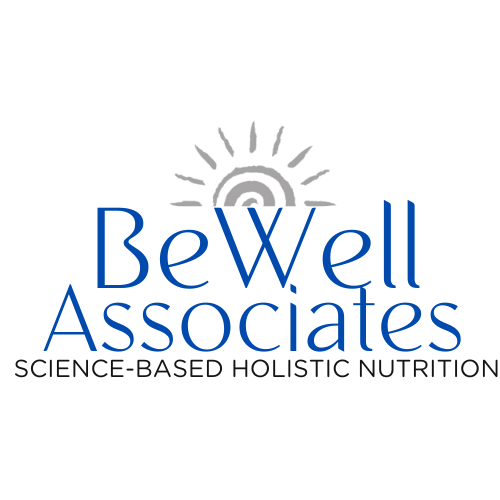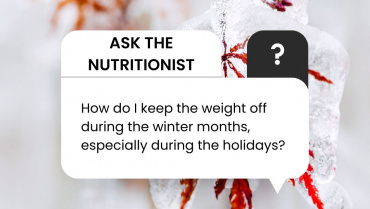Test Your Shopping Savvy
Think you know what’s really in your food? Do you ever find yourself reading labels and questioning what certain ingredients are?
You may have been reading labels forever, checking calories or fat content, carbs or protein, and it has seemed like an easy task.
But in recent years, our food system has undergone radical changes, with increased additives and engineered foods. Some keywords have been used as marketing tools to make us want to buy products based on what is popular or deemed healthy. Words like ‘all natural’ or ‘organic’ lead us to believe we are buying something healthy, but this is not always true.
All Natural means All Good, right?
The ‘All Natural’ label just means the ingredients were derived from nature. From wood chips to crushed bugs, these things fall under the labeling laws of “natural.” The FDA does not define “all-natural”, so anything present in nature can be used in a natural product. Natural flavoring, for example, specifically vanilla and raspberry, is castoreum, or the secretion of the beaver anal gland. Because it occurs in nature, it passes as a natural ingredient. Additives like annatto and carrageenan, which are said to be ‘natural’ preservatives, still create GI disturbances for many people.
Buying Organic Can Be Tricky
Organic products have four distinct labeling categories – 100 percent organic, organic, “made with” organic ingredients, and specific organic ingredients. Products labeled:
- “100 percent organic” must contain 100% certified organic ingredients
- “USDA organic,” must contain 95%-100% certified organic ingredients. Use of non-organic ingredients is allowed but cannot total more than 5% of the combined total ingredients (excluding salt and water).
- ‘Made with organic’ without the USDA stamp of approval means at least 70% of the product must be made with certified organic ingredients, meaning the other 30% can come from anywhere as long as production does not involve genetic engineering, sewage sludge, or ionizing radiation. Some organic products in the grocery store still contain additives like MSG, added sugars, and sodium.
- Specific organic ingredients. No certifying body oversees these products, and they can include any percentage and combination of organic and non-organic ingredients.
What suspicious products should you be on the lookout for?
Processed foods are all suspicious, meaning anything packaged in a box or a can. As convenience foods have grown in popularity, so have our rates of obesity and diabetes. And for most of this stuff, there are no government regulations on how things can be packaged and sold.
Here are some specifics to avoid:
Artificial Flavors and Dyes: Food manufacturers use synthetic food dyes such as Blue 2, Yellow 5, and Red 40 to enhance the color of certain foods and make them more appealing to consumers. These are used especially heavily in foods and drinks marketed to children. These flavors and dyes are typically derived from petroleum and can also contain metals, crushed insects, and crude oil. Research has linked the consumption of artificial flavors and dyes to an increased risk for conditions like hyperactivity in children as well as tumor development. The effects of artificial food colors on children’s behavior have been studied for nearly 50 years and is well established. Synthetic food dyes are banned throughout Europe and Australia, however, the FDA still allows their use in the United States (even though the FDA banned Red 3 for use in cosmetics in 1990).
MSG: MSG (monosodium glutamate), commonly found in Chinese food and many packaged foods as well, is an excitotoxin, which means it overexcites your brain cells to the point of poor focus and processing abilities, trigger or worsen learning disabilities and cause brain damage to varying degrees. It can potentially contribute to the development of Alzheimer’s disease, Parkinson’s disease, Lou Gehrig’s disease and more. MSG has been linked to obesity, eye damage, headaches, nausea, fatigue, disorientation, and depression.
Caramel Color: This ingredient can be found in many commercially produced foods and beverages, including sodas, artificial pancake syrup, breads, cereals, broths, sauces, soups, and more. It is often created by combining corn syrup with ammonia and sulfite compounds. The byproducts of this mixture, 2- and 4-methylimidazole, have been labeled as “possibly carcinogenic to humans” and have been found to cause cancer in mice.
Yeast extract: This is just another name for MSG. Unfortunately, it is legal for a company to say their food product has “no added MSG” as long as they don’t add monosodium glutamate. MSG, however, hides in more than 40 commonly used ingredients in packaged foods, with yeast extract being one of them. Others include glutamic acid, natural flavoring, natural spices, hydrogenated vegetable protein, and yeast caseinate.
Calcium sulfate: When used in baking, it acts as a dough conditioner to help the dough not be overly soft and sticky. This ingredient is usually used in industrial baking because it is cheaper than flour and eggs. It is also commonly used as a food additive to stabilize and firm foods and regulate their acidity levels. You may also recognize it as another common craft name: plaster of Paris.
Greek yogurt: Since Greek yogurt came onto the market, major companies have been trying to cash in on their version of this high-protein yogurt. By adding gelatin for thickness and milk protein concentrate to increase the protein content, they have created a product that should just be called “cream and good bacteria.”
Propylene glycol: Commonly used as an additive to aid in the processing of foods and to improve their texture, flavor, appearance, and shelf life. It is often found as an additive in water enhancers (electrolyte and sports drinks) and is another name for antifreeze. There are much better ways to enhance your water!
Titanium dioxide: Titanium dioxide, aka E171, is an inorganic compound used in foods and a range of body care products such as sunscreens, makeup, and feminine pads and tampons. It is used as a synthetic colorant to make food items like salad dressings and coffee creamers look bright white and to extend their shelf life. Titanium dioxide has been labeled a possible carcinogen, is genotoxic (meaning that it causes DNA damage) and has been linked to cancer in animal studies. This compound has been banned in Europe as a food additive but is still allowed in the US (the FDA has set a limit on how much titanium dioxide food items can contain – no more than 1% of the total product).
Textured Vegetable Protein: This is a cheap meat substitute made from defatted soy flour, a byproduct of soybean oil production, which is usually genetically modified. Manufacturers add this to other meat products to increase the protein content, and it is cheaper than making products with 100% beef. OR TVP is marketted as a safe meat substitute to vegans and vegetarians.
Trans-fat-free: Anything with less than .5 mg of trans fat is not required to be labeled. Many products are labeled trans-fat-free based solely on their serving size. If you eat more than the serving size amount, you must consider that you are indeed getting trans fats. Look for the ingredient “partially hydrogenated” on the label, which indicates that a product contains some trans-fat. Research shows trans fats cause comparatively more weight gain than the same diet with monounsaturated fats and a redistribution of body fat tissue to the abdominal area, the riskiest place to carry extra padding. Additionally, they are associated with inflammation and atherosclerosis.
Fat-free: This common addition to labels means that they have removed the fat and added sugar in its place. We have been conditioned to think that all fat is bad, but the extra sugar is what adds on the pounds and creates health concerns.
GMOs: We must also be aware that many other additives and preservatives are derived from Genetically Modified Organisms (GMOs). Eighty percent of processed foods are genetically modified to some degree, with staple crops such as soybeans and corn being nearly all modified. Things like citric acid and caramel coloring usually come from corn. Things to be on the lookout for are corn, canola (or rapeseed), soybeans, and sugar beets. GMOs are prohibited in organic products, so buying organic is another way to screen for GMO foods.
So how do you navigate the grocery store? How do you maintain a healthy pantry?
First of all, take a deep breath! Decide on one small change at a time, such as reading a label carefully before throwing an old favorite into your cart. Or try cutting out just one of the abovementioned ingredients.
Here are a few tips to get you started with healthier living:
- When you shop, navigate the outside perimeter of the store, where you will find the freshest, most whole foods.
- Eat as many whole foods as possible and foods in as little packaging as possible. If it won’t rot, don’t eat it!
- Prepare as many of your foods and meals as possible! Doing your own cooking and baking means you have complete control over the added ingredients and is cheaper and healthier than using the prepared stuff.
- Look into a local farm share or Friends and Farmers Co-op to get an array of fresh veggies year-round.
- Go to the local farmers’ markets and buy locally raised, grass-fed meat and seafood.
- Purchase organic foods when you can.
- Make sure you also take time to live a little!! 🙂






Add Comment